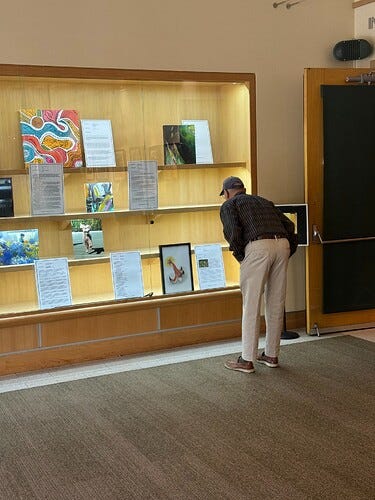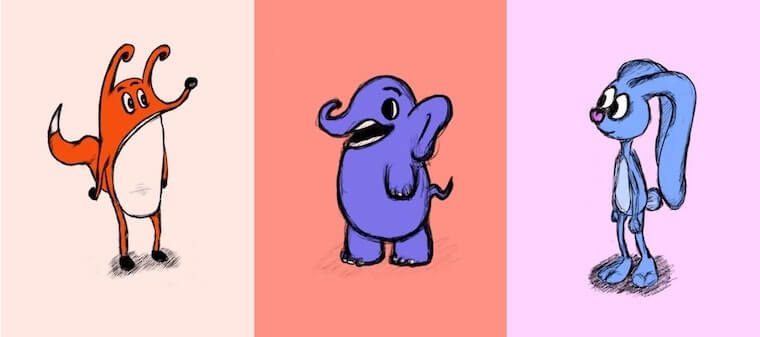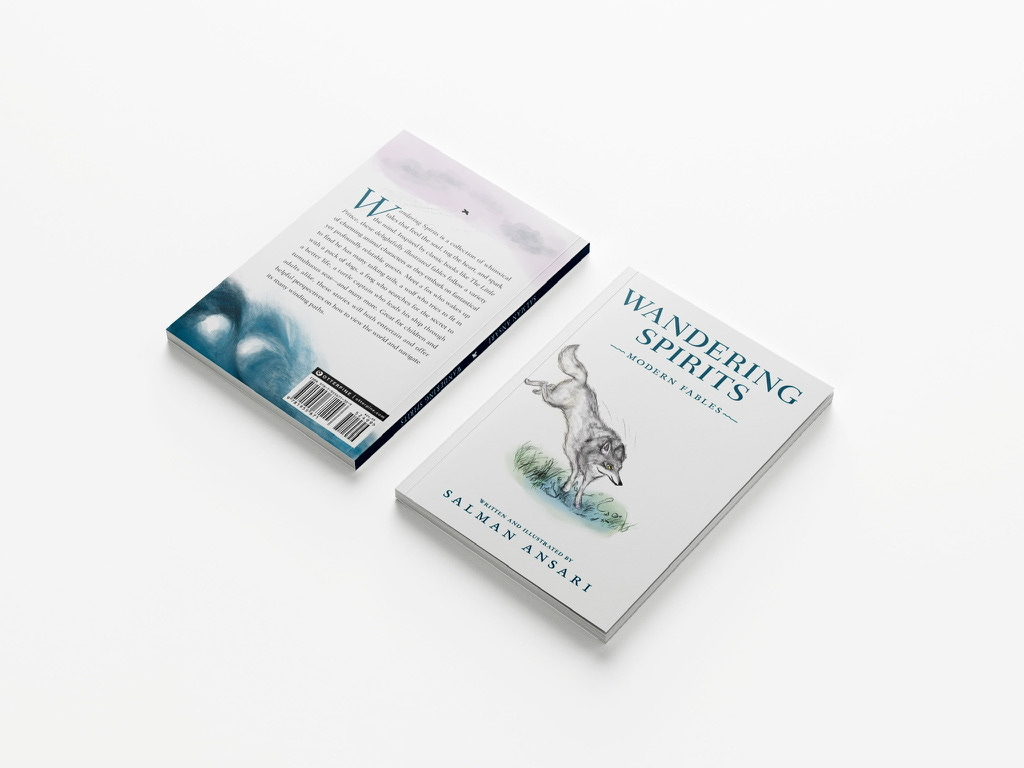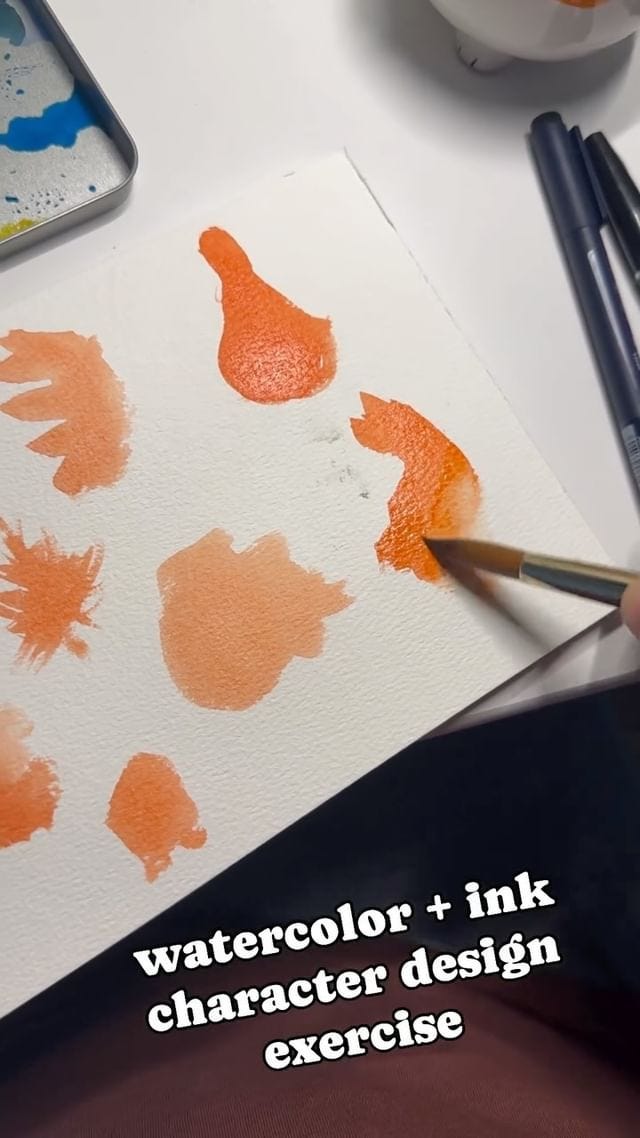🦊 Do Pointless Things
Recently I was on stage at the Town Hall Theater in Lafayette, doing a Q&A after a book reading event, when the moderator asked, “Why are fables so important to you? What is it about them that motivated you to write your own book of fables?”
I replied: “The classic fables are timeless gems of wisdom. Our shared stories, myths, and folklore are invaluable guides on how to live our lives. They’ve lost prominence in our modern societies, though we need them now more than ever. But that’s not why I wrote the book. The real reason I wrote it was because of a bunch of made-up animals.”
As a mix of laughter and confusion spread throughout the audience, I went on to explain the origin story of my book, Wandering Spirits. I want to share that story with you today, because it carries an important lesson about the power of doing pointless things.
Years ago, after a bout with burnout, I was taking extended time off to recover. I had written down a “freedom list” of things I wanted to do. One of them was to get back into drawing. I used to draw as a kid, and I was pretty good at it, but I never pursued it because… well… my parents didn’t really encourage that kind of thing. All that really mattered was my grades. So, I dropped it.
When I picked up drawing again as an adult, I decided that not only was I going to draw, but I was going to get great at drawing. This led me to buy a ton of instructional books—figure drawing, perspective, light and shading, posing. The stack was quite tall.
Before long, I hated drawing. I hated everything I made. I felt they were not good enough, and that the human figures I drew were never accurate. (This is a common outcome with adults—we push ourselves and judge ourselves way too harshly, even with our hobbies.)
I complained to my friend about how I hated my art. He offered a suggestion. He said my problem was I was trying to draw people, and we tend to have a really strong idea of how people look. It’s in our genes to see even the most subtle things that are “off” with a drawing of a person. Instead, he said, I should draw made-up animals. That way, I can’t draw them wrong, because there’s no “right” way to draw a made-up animal.
I wasn’t sure if it was the best or the dumbest idea I had ever heard. But I tried it.
I started sketching random animals. I let my hand do the thinking for me. One by one, wacky and colorful animals appeared before me.
I was having fun! I loved drawing again.
There was no goal to it. I didn’t know if drawing these silly animals would ever lead to anything. But I did it anyway, because it was fun.
Fast forward to a few years later: I had been writing online for several years, had grown my newsletter, but I wanted to work on a bigger, meatier project.
I decided to write a book.
I signed up for a program called Writing in Community, in which you’re supposed to write every single day, share a bit of writing in the forums, and then publish a book after six months. It seemed wild and ambitious, but I signed up anyway.
On the first day of the program, you had to write down the goal of your book. I had this idea of expanding upon my Polymath Playbook article (about the virtues of being a generalist), to share a set of tips on how to be multi-disciplinary without losing your mind.
I wrote out a few sentences describing the book. But I found myself struggling to get excited about it. I thought, “Man, if even I’m not excited about this, how will I get readers to be?”
I looked over at the corner of my desk where my iPad sat. I opened it and looked at some of the sketches of silly animals I had made. I smiled. I thought, “I wonder what their story is? What’s their life like?”
Exploring the stories of the silly animals felt like a far more interesting adventure than the polymath book idea. So I deleted the polymath summary, and replaced it with a short bit about making up animal stories for adults, inspired by The Little Prince. That’s all I had to go on, but turns out it was enough.
Day by day, the fables were born. A year later, I had finished the stories. A year after that, I was done editing. And then, after six months of illustration work, Wandering Spirits was published.
There’s no way I could have known that drawing silly animals would lead me to write that book.
The point of doing pointless things is precisely that you don’t know the point.
You can’t predict it. It might pay off right away, or years from now, or never at all. But you do it anyway, because it’s fun, or because it’s satisfying some tiny curiosity in you, or just because you can.
I’ve been taking some watercolor painting classes, and one of the lessons is about using salt. Normally, I would have researched salt, understood the chemistry behind it, and planned techniques around how to best use it. I tend to overthink these things. So it was great that in the class, she just gave us some salt, and basically said, “Go nuts.”
And so I did. I painted a fox, threw some salt on it, and sat there giggling as I saw the results. I love the way it sparkles against the light. I kept the playful energy going and turned it into a silly video. Don’t be afraid to get salty, friends!
It's hard to let yourself do things without a reason. There's always a voice asking, “What it will lead to?” (Usually, that voice is our parents.)
But we need to silence that criticism in order to let our creativity flow. We need to give ourselves permission to play.
The capitalist pressure of purpose is all-pervasive. Escaping it is an act of rebellion.
Give yourself permission...
To write words no one will read,
To draw pictures no one will see,
To make things no one will touch.
Creativity has many goals. Consumption is only one of them.
Showing Up
I’ve been spending a lot of time practicing traditional watercolor painting, and I’ve been doing a bunch of reading events for my book. It’s been wonderful. I’ve really enjoyed the meditative experience of drawing on physical mediums, and the energetic presence of in-person events.
But the focus on drawing and speaking has come at the cost of my writing habit. As I sit down to write and publish this piece, it feels much harder than usual, like a rusty windmill struggling to get going again.
It’s funny how many times this has happened. How predictable it is. No matter how many years I spend writing, walking away from it (even for a few weeks) always makes it difficult to come back.
At the same time, if I don’t spend time immersing myself into drawing, my hand loses the muscle memory of it, and I don’t really progress as an illustrator. Even the act of simple sketching becomes a struggle.
It’s a tough challenge to balance these disciplines, but it’s the price I choose to pay as a multidisciplinary artist. I love to write. And I love to draw. I’m grateful I have that fire in me to not only do both, but to keep learning and growing at their respective crafts. So I do my best to honor these gifts with the necessary practice.
The solution is always the same: Show up.
Show up happy. Show up sad. Show up depressed. Show up delighted. Show up overwhelmed. Show up however you are, and let the energy of the moment show up on the page.
Forget about what you missed yesterday. Show up today.
Quick Brown Fox is a reader-supported publication. To receive new posts and support my work, consider becoming a free or paid subscriber.
I’ll leave you with a few photos from my recent book events:



Lastly: If you’re looking to play around with watercolors, here’s a simple practice you can try. All you have to do is make some random blotches with your brush, wait for it to dry, and you can make some fun characters out of them!
Have fun! And don’t forget to do something pointless this week :)





This is me. All of it. I haven't written a book of fables or had any tangible success, but outside of that our trajectories are the same.
love this message, and specifically: “Creativity has many goals. Consumption is only one of them.”!